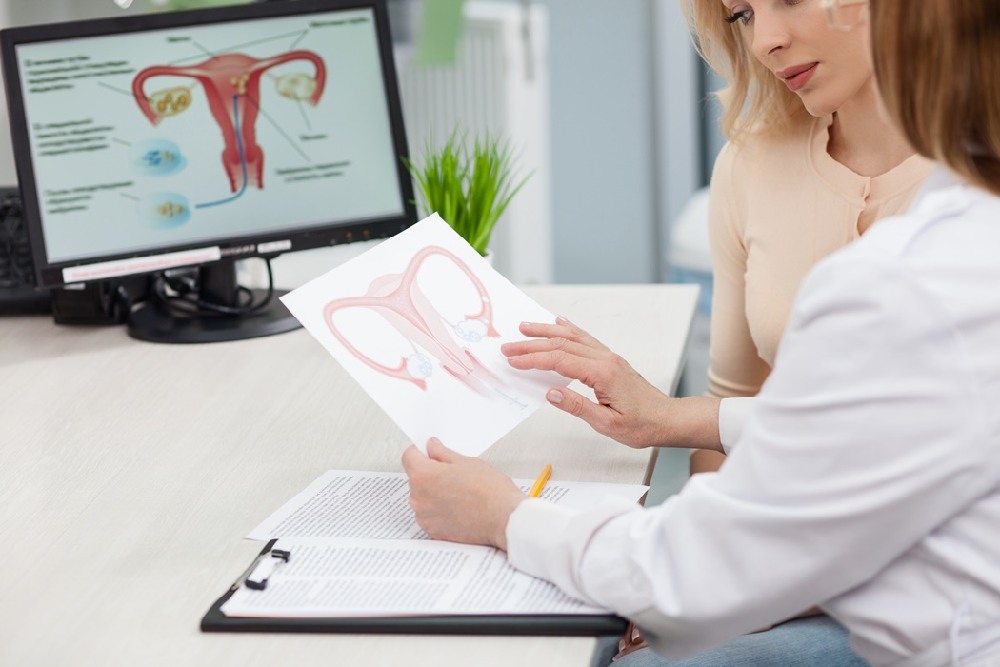Fibroids, noncancerous growth of the uterus that often appear during childbearing years, can bring significant challenges to women’s health. These benign tumors can vary in size and location within the uterine wall, causing symptoms such as heavy menstrual bleeding, pelvic pain, and even fertility issues. Fortunately, there are numerous fibroid treatment centers across the USA dedicated to providing effective and comprehensive care for women dealing with this condition.
Table of Contents
Understanding Fibroids
Before delving into the world of fibroid treatment centers across the US, it’s essential to comprehend the nature of fibroids. These growths are primarily composed of muscle and connective tissue, and while they are mostly benign, they can cause a range of uncomfortable and disruptive symptoms.
- Fibroid Symptoms: Fibroids can manifest in various ways, including heavy menstrual bleeding, pelvic pressure, frequent urination, and lower backache. Depending on the size and location, these symptoms can impact a woman’s quality of life significantly.
- Diagnosis: Accurate diagnosis is critical for effective treatment. This often involves imaging studies, such as ultrasounds or MRIs, to confirm the presence, size, and location of fibroids.
Treatment Options
The field of fibroid treatment has evolved significantly, offering women various options tailored to their individual needs and circumstances.
- Medications: For women experiencing mild symptoms, medication can be prescribed to alleviate pain and reduce excessive bleeding caused by fibroids. It’s important to note that these medications do not eliminate the fibroids themselves; rather, they focus on mitigating the discomfort and adverse effects associated with fibroids. By targeting symptoms such as heavy menstrual bleeding and pelvic pain, these drugs offer women a practical means of finding relief from the impact of fibroids on their daily lives, enhancing their overall well-being.
- Minimally Invasive Procedures: For women seeking a less invasive approach, procedures like uterine artery embolization (UAE) and radiofrequency ablation (RFA) are available. These techniques aim to shrink or destroy fibroids while preserving the uterus.
- Surgical Interventions: In more severe cases, surgical removal of fibroids (myomectomy) or, in some instances, a hysterectomy may be recommended. These options are typically considered when fibroids are causing significant pain, bleeding, or fertility issues.
The Role of Fibroid Treatment Centers
Fibroid treatment centers across the USA play a pivotal role in addressing the unique needs of women dealing with fibroids. These specialized facilities offer a range of benefits:
- Expertise: Fibroid treatment centers are staffed with highly trained medical professionals who specialize in diagnosing and treating fibroids. Their expertise ensures that patients receive the most suitable care and guidance.
- Advanced Technology: These centers are equipped with state-of-the-art technology, enabling accurate diagnosis and a wide range of treatment options, including minimally invasive procedures.
- Personalized Care: Every woman’s experience with fibroids is unique. Fibroid treatment centers prioritize personalized care plans tailored to each patient’s specific condition and goals.
- Supportive Environment: Dealing with fibroids can be emotionally challenging. Fibroid treatment centers often provide a supportive and empathetic environment where patients can discuss their concerns and receive guidance.
Accessing Fibroid Treatment Centers
Finding the right fibroid treatment center is crucial for effective care. Here are some steps to help you access these centers:
- Consultation with a Gynecologist: Start by discussing your symptoms with a gynecologist. They can evaluate the condition and recommend appropriate treatment options, including referrals to fibroid treatment centers if necessary.
- Research: Utilize online resources and directories to research fibroid treatment centers in your area or in locations that are convenient for you. Consider factors such as the center’s reputation, available treatments, and patient reviews.
- Consultation: Schedule consultations with the fibroid treatment centers you are interested in. During these visits, you can discuss your condition treatment options and get a sense of the center’s approach to patient care.
- Insurance Coverage: Ensure that the fibroid treatment center you choose accepts your health insurance plan or offers payment options that are feasible for you.
Taking Control of Your Health
Empowering women’s health means proactively addressing conditions like fibroids that can profoundly affect their lives. With fibroid treatment centers accessible throughout the United States, women have the opportunity to access a diverse array of treatment modalities and expert medical care, which can effectively alleviate symptoms and enhance their overall quality of life. These specialized facilities offer tailored solutions and advanced interventions, ensuring that women can regain control of their health and well-being in the face of fibroids’ challenges.
Remember that seeking help for fibroids is a proactive step towards a healthier and more comfortable life. Whether you opt for medications, minimally invasive procedures, or surgery, these treatment centers are dedicated to providing the support and care needed to address the challenges posed by fibroids. Take the initiative to explore the available options and find a fibroid treatment center that aligns with your unique needs and goals.

